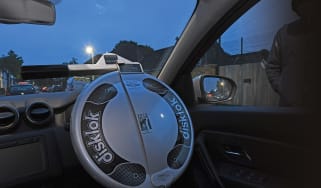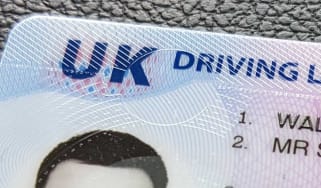Part-worn tyres tested vs new tyres: what’s the difference and should you buy them?
Depending on who you ask, part-worn tyres are either a great money-saver or a risky gamble. But should you buy part-worn tyres and what are the risks involved?
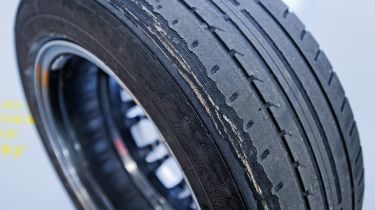
You may have seen part-worn tyres for sale at the side of the road or online and wondered, what are part-worn tyres? To some, they’re a cheap and easy way to get new rubber fitted to their car, but to others, they’re simply too risky or dangerous to consider.
Part-worn tyres are exactly as you would expect - tyres which have already been used. You’ll usually find part-worn tyres being sold at car recycling facilities, scrap merchants or other sources that deal with second-hand cars or insurance write-offs, as the selling of old tyres is seen as a way of making a little extra money on the side. If a vendor is scrapping a car, they may try and salvage the tyres too, if they think they are worth saving.
However, opinion on what constitutes a salvageable tyre can vary, and one person’s ‘safe’ tyre could be considered dangerous by somebody else. Buying a part-worn tyre is much like buying a second-hand electrical product – you don’t have any comeback if there is something wrong with it, and if you have an accident that can be squarely blamed on the fitting of a part-worn tyres, then you don’t have any legal recourse if you want compensation.
But should you buy part-worn tyres? Our guide looks at the risks involved in buying second-hand tyres and what you should look out for if you decide part-worn tyres are for you. Our experts tested a set of worn tyres against new tyres to understand the differences in performance.
Part-worn tyres put to the test
To demonstrate the difference between worn and new tyres, Auto Express was invited to the wet handling area at UTAC’s Millbrook proving ground to compare the braking and handling of two identical Ford Pumas. One Puma was fitted with a brand-new set of Continental SportContact 7s, while the other Puma had the same tyres shaved down to the UK legal minimum tread depth of 1.6mm. Both cars were fitted with telemetry to compare emergency braking distances from 70mph and 60mph to a stop on a wet surface.
Telemetry data showed that from 70mph, the stopping distance on cold, wet tarmac was 60.7 metres for the car on new tyres, and a staggering 75.6 metres on the worn tyres – that's 14.9 metres further, equivalent to three-and-a-half car lengths. From the driver's seat, the Puma with worn tyres felt less controlled under braking, with the traction and stability control working harder to keep the car on course.
The outcome from 60mph was similar. On new rubber the car stopped in 42.6 metres, while the worn tyres had a stopping distance which exceeded 55.1 metres. No data was collected for the handling test, but it was clear the worn tyres were lacking in grip, leading to excessive understeer on tight corners.
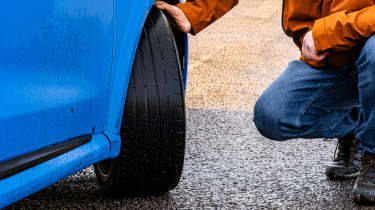
Part-worn tyres could provide a short-term solution for motorists looking to replace their old, cracking, balding or low-on-tread tyres, for safety reasons or to pass an MOT, but they’re certainly not without risk.
Should you buy part-worn tyres?
There are a number of risks involved when buying part-worn tyres, so it is generally advised that you avoid buying second-hand tyres when the time comes to replace the rubber on your car.
The reality is that part-worn tyres are a gamble, even in the best-case scenario. With unknown history and the potential for failure, you could be taking your life and that of others into your own hands. What could be a potential saving in the short-term could pay back dearly in the future.
Why buy part-worn tyres?
The only real reason for buying part-worn tyres is to save money. According to a 2023 survey from online retailer eBay, 39 per cent of drivers say they will only replace their old tyres if they cause the car to fail an MOT, while 27 per cent admit to waiting ‘several months’ to replace a tyre that’s been issued with an MOT advisory warning. More alarmingly, 11 per cent of drivers who receive an MOT advisory warning said they would delay replacing the tyre until the tread fails the next MOT.
The figures also suggest that one-in-ten drivers have delayed the purchase of new tyres at some point in the previous three years due to financial pressures.
What are the risks of part-worn tyres?
Regulations surrounding the sale of second-hand tyres in the UK are fairly straightforward.
- Part-worn tyres should be in a good condition, with no large cuts in the tread, no bulges in the sidewalls and the chords and structural carcass should not be visible.
- Tyres should have at least 2mm of tread across the width and around the circumference.
- Part-worn tyres should be permanently marked as ‘part-worn’ in upper-case letter on the tyre sidewall, with the text being at least 4mm in height.
Even if part-worn tyres have plenty of tread to pass legal scrutiny, the quality control between part-worn tyre vendors will be variable at best. Some sellers are willing to flaunt the rules listed above, while others won’t be as bothered about issues such as damaged sidewalls, tyre puncture repairs or uneven wear.
Part-worn tyres also have an unknown history. Has the car they were previously fitted to been involved in an accident? Were they removed for safety reasons by the previous owner? Have they previously been repaired? These are important questions which the seller may not be able, or willing, to provide answers to. It all adds to the uncertainty and risk.
Brand-new tyres typically have a tread depth of between 8-9mm, so a part-worn set may, at best, have a few millimetres less than a brand-new equivalent. As a result, the braking and cornering grip produced by a second-hand tyre will be less, especially in wet and cold conditions. This could be the difference between avoiding a collision or not.
It’s worth noting that while part-worn and second-hand tyres may offer a cost-saving when compared to a brand-new tyre, the likelihood is that you will need to replace a used tyre more frequently.
Part-worn tyres: buying advice
If you’re insistent that part-worn tyres are the way to go, the first thing we’d recommend is buying a well-know, famous brand, because at least you know the basic tyre will be constructed to a quality standard. We’d also recommend buying them in pairs, so you can get two tyres on the same axle which should theoretically match. If you’re buying one tyre, it’s very unlikely that you’ll be able to find one that matches the other three on your car in terms of tread wear and depth.
Tyre tread wear
Tread wear is the key thing to inspect. If the tyre has hardly been used, then you could get plenty of mileage from it. But if the shoulders are worn, or there's uneven tread, then who's to say you won't be coughing up again in a few months when your car fails its MOT because the tyres are worn out?
New tyres have 8mm of tread on them, while most outlets and safety organisations recommend replacing your tyres when there's 3mm of depth left. Anything less than this isn't worth working with, and even if there's more tread than this, if it isn’t evenly worn across the tyre it’s best to look elsewhere.
Sidewall damage
If the tread is fine, it's time to check the sidewalls. If the tyres have come off a car that has been involved in an accident (again, how do you know if they have or haven't?), then there's a high possibility that the tyres may have been damaged in the incident. Perhaps bodywork has come into contact with the tyre or lateral forces have damaged the sidewall's construction.
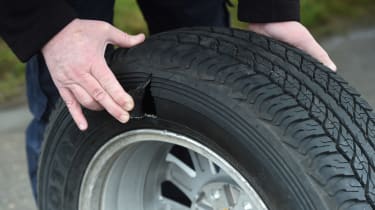
Irrespective of this, sidewalls can be damaged simply by poor parking. Any cuts, scrapes or loose rubber on the sidewalls could be a portent of damage to the tyre's construction, so always inspect the inside of the tyre for a consistent look to the internal part of the sidewall, too.
Tyre repairs
Another issue is with repaired tyres. If a tyre has suffered a puncture caused by a nail, screw or other sharp object piercing the tread, then it can be repaired with a plug of rubber that seals the tread against leaks.
There's nothing wrong with these repairs, but where the tread has been punctured, there will be damage to the belts that help the tyres retain their shape. Some tyres are unable to be repaired, and those that are may be limited in their maximum speed rating. Again, check the interior carcass of the tyre for damage. If you're being thorough, then it's probably worth walking away from tyres that have any kind of damage to them, either inside or out.
Tyre age
There is no definitive tyre age limit, but when tyres get to around seven years old, the overall condition of the rubber deteriorates, leading to cracking and reduction in performance – even if there is a lot of tyre tread remaining on the carcass. So it’s best to avoid any tyres which were manufactured seven or more years ago.
To help you identify the age of a tyre, there is a coded date printed on the sidewall, with the first two digits representing the week of production during the year and the second two digits representing the year of manufacture. So a code of 4122 would mean that tyre was manufactured in the 41st week of 2022.
If a tyre only has a three-digit number printed on the sidewall, it means that tyre was manufactured before the year 2000 and should be avoided. Our guide to tyre markings explains more.
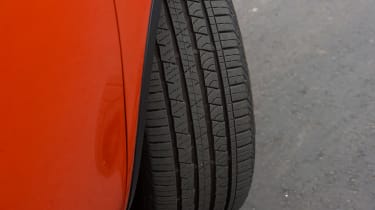
Part-worn tyres: top tips
If you’re set on buying some part-worn car tyres, the following tips should give you the best chance of getting a good deal:
- Buy from a reputable seller.
- Find out as much as you can about the history of the tyre - was the previous car involved in an accident? Has the tyre already been repaired?
- Look for well-known, famous brands.
- Buy tyres in pairs so the tyres on each axle of your car match.
- Check the tread depth and look out for uneven wear.
- Check the tyre carcass inside and out for any damage, cuts, bulges or repairs.
If you are in any doubt, do not buy. Buying a brand-new set of tyres is much more cost-effective in the long run, and there are plenty of tyre shops which can cater to the needs of all vehicle types – from small superminis to large SUVs. Not only will you have the peace of mind that comes with a brand-new tyre, there are plenty of tyre brands to suit all budgets.
Have you ever bought part-worn tyres before? Tell us about your experience in the comments section below...


